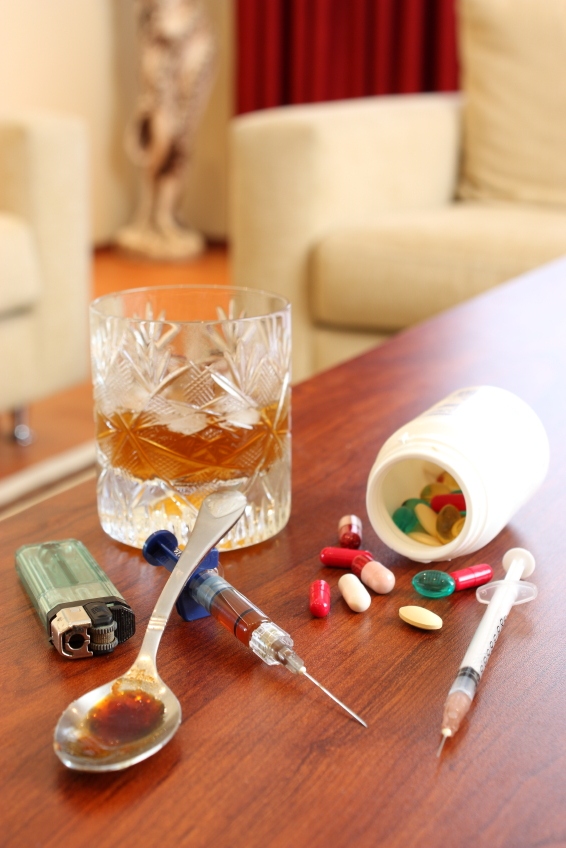
Despite the press given lately to heroin, if you were to say that it was the most addictive or harmful drug there is, you would be wrong. It is the drug most likely to result in an overdose death when used, but there is a more harmful and more addictive drug than heroin.
In The Science of Addiction, Carlton Erickson reported on research done by Anthony, Warner & Kessler in 1994 on the “dependency liability” of various drugs and classes of drugs. A dependency liability is the likelihood that a person will become dependent (addicted) upon a drug if they use it. To get a “dependency liability” a drug has to have an effect on the mesolimbic dopamine system, the reward center or pleasure pathway, of the brain.
The research of Anthony et al. suggested that the percentage of users who became dependent upon a particular drug were as follows: nicotine, 32%; heroin, 23%; cocaine, 17%; alcohol, 15%; stimulants, 11%; cannabis, 9%; sedatives (includes tranquilizers), 9%; psychedelics, 5%; inhalants, 4%. So according to their research, nicotine is the most addictive drug. But it wasn’t the most harmful drug.
There was an interesting British study done a few years ago on the harm caused by the misuse of various drugs. 12 Keys to Recovery recently put together an inforgraphic of data from the study, which can be found here. You can also read the original study in The Lancet, after a free registration. The goal of the study was to provide guidance when making policy decisions in health, policing and social care. However, it also provided some helpful information on the harm done by drugs to both drug users and to others.
The first stage of the process was to select the harm criteria that were to be assessed. These criteria were then organized by harms to users and harms to others; and then clustered under physical, psychological and social effects. See Figure 1 in the original study, which is a chart of the criteria and how they were organized. The second stage consisted of a meeting of drug experts who scored every drug on each harm criterion; “and then assessed the relative importance of the criteria within each cluster and across clusters.” The result was a common unit of harm across all the criteria. From that data, a new analysis of relative drug harms was done. The ratings were scaled from 0 to 100.
The following chart compiles the scores for the top ten drugs according to their overall score and that for harm to others and harm to users.
|
Drugs |
Overall harm |
Harm to users |
Harm to others |
|
Alcohol |
72 |
26 |
46 |
|
Heroin |
55 |
33 |
22 |
|
Crack cocaine |
54 |
37 |
17 |
|
Cocaine |
27 |
20 |
7 |
|
Tobacco |
26 |
17 |
9 |
|
Cannabis |
20 |
12 |
8 |
|
Meth |
33 |
31 |
2 |
|
Amphetamine |
23 |
19 |
4 |
|
Ketamine |
15 |
12 |
3 |
|
Ecstasy |
9 |
8 |
1 |
- The 5 most harmful drugs overall were: alcohol, heroin, crack cocaine, meth, and cocaine.
- The top 5 harmful drugs to others were: alcohol, heroin, crack cocaine, tobacco, and cannabis.
- And the 5 most harmful drugs to users were: crack cocaine, heroin, meth, alcohol, and cocaine.
Alcohol earned the highest overall rating by having over twice the rating of “harm to others” than heroin, its nearest competitor. Interestingly, it was only rated at 26, 4th, for “harm to users.” Heroin and crack cocaine were always in the top three for each of the categories: overall, to users and to others.
There was also data on the types of harm and the drugs judged to be the most responsible for that type. Heroin was considered to be the drug most responsible for four types of harm. Alcohol was most responsible for seven types. Meth was most responsible for three types, most notably intoxication and psychosis, and loss of relationships. LSD was judged to be most responsible for mood disorders, which is an interesting finding as it is being researched as a treatment for alcoholism and other psychedelics are proposed to treat mood disorders. Look for a coming blog post: “Back to the Future with Psychedelics.” See the following chart for the information on which drugs were rated as being the most responsible for the types of harm.
|
Types of Harm |
Drugs |
|
Overdose |
heroin |
|
Accidents and suicide |
alcohol |
|
Related disease |
alcohol |
|
Self harm; unwanted sexual activity |
heroin |
|
Addiction |
alcohol |
|
Mood disorders |
LSD |
|
Intoxication and psychosis |
meth |
|
Loss of tangibles |
heroin |
|
Loss of relationships |
meth |
|
Injury |
alcohol |
|
Crime |
heroin |
|
Environmental damage |
meth |
|
Family adversities |
alcohol |
|
International damage |
cocaine |
|
Economic cost |
alcohol |
|
Community |
alcohol |
There were no real surprises here for me, except maybe the rating of LSD as the most responsible drug for mood disorders. Yet the study was useful in providing a systematic way to quantify the amount of harm done by drugs to their users and to others. I’ll close with a caveat from the discussion of the British study:
“Finally, we should note that a low score in our assessment does not mean the drug is not harmful, since all drugs can be harmful under specific circumstances.”





